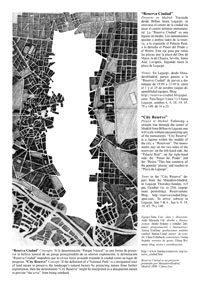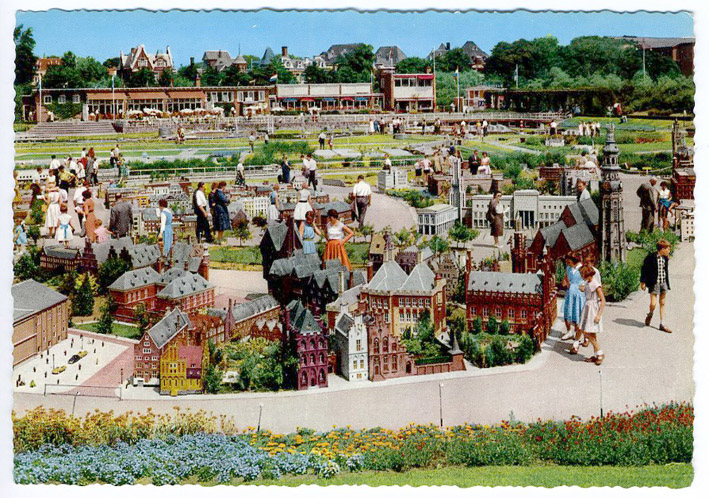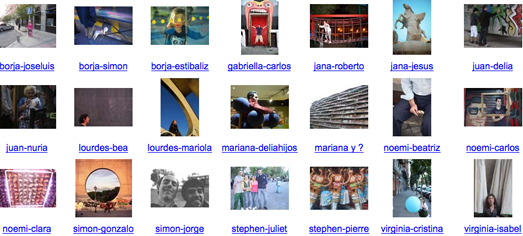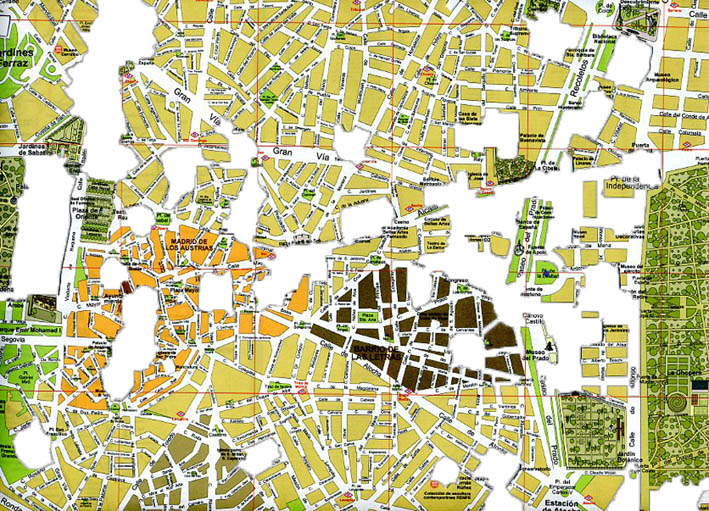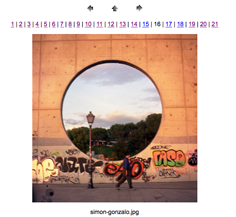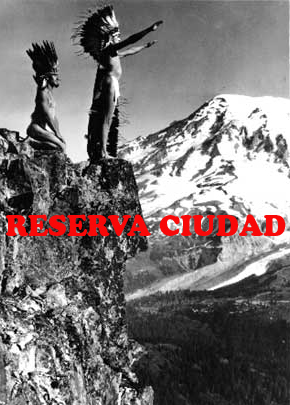|
< pulsar
para pdf
"City
Reservoir"
City Reservoir, Rethinking tourism, creating
anonymous encounters, redrawing the function
of the city’s cultural center.
Summary
The
goal of City Reservoir is to enhance the
intellectual and existential aspects of
city life, while raising an awareness of
ecologies of the immaterial. Using a combination
of mapping, artist-led tours, archiving
and the publication of a book, the project
seeks to highlight the importance of those
aspects of the city that are often overlooked
by other contemporary forms of urban entertainment
and cultural production, aspects of an immaterial
ecology.
History
The
project began in 2006 after conversations
between Gabriel Park and Jana Leo on how
to create an agency to control city gaps
followed up with discussions with Adeola
Enigbokan on changes taking place in New
York City and on the meaning of preservation.
Trips to the library and subsequent research
on the origins of the
US
National Park system
led to a hypothesis on the idea
of the city center as a protected site,
as a city reservoir with a status that had
more in common with natural ecologies than
with listed buildings or neighborhoods.
This hypothesis was later tested in the
Reserva Ciudad Matadero project for Madrid
in 2009 where a number of the ideas and
components of the current proposal were
developed and conceived. The City Reservoir
project seeks to extend these preliminary
investigations on a more international scale
in hopes of further articulating and understanding
the meaning of cities now.
Concepts:
reserva ciudad
mental
city
preserving
a city ecology
of the immaterial the
image or the projection of the city
cultural
tourism
Methodology
Vehicles. carrying
concepts into practice: tours
maps
texts de Jana Leo;
ideas editing Sony Devabhaktuni
***
Project’s
concepts: reserva ciudad
If
a ‘National Park’ is a designated tract
of land meant to preserve the landscape’s
natural beauty by protecting nature from
further exploitation, then the designation,
City Reservoir, might be interpreted as
meant to protect mental activity, to prevent
‘the civic’ from being subdued, and to prevent
cities from becoming simply places for consumption:
the city seen as an international civic
plaza rather than a place that is just crowded;
an intellectual park, containing the one
and the other in all its chaos and its freedom!

Project’s
concepts: mental city
What
is accepted is that cities become desirable
when they are viewed as being commercial
and service centers for a broad population.
But it is not recognized that mental and
abstract activities also define the city.
Besides, being places of opportunities (better
jobs, education, better living conditions,
education, access to all) and entertainment,
cities are places for thinking, (humanism
in its wide spectrum: memories of past events,
records of achievements, the spread of new
ideas, places for sharing experiences) and
experiencing (encounters among individuals,
being part of something big). Cities are
also the ‘mental reservoir’ of a country
and the world. Since these reservoirs are
always at risk of extinction, they need
to be preserved. This intellectual life
can be understood as part of that which
is immaterial or unseen within the urban
landscape. This culture of experience cannot
be commodified or sold through the packaging
of tourism, but rather is a slow unfolding
that becomes present through an awareness
of the subtle shifts of a city’s daily changes
that build upon each other and can only
be measured and revealed as registers of
difference.
Project’s
concepts: preserving a city
Two
kinds of preservation come to mind: historical
rehabilitation and the nature reserve. What
remains are physical things: a forest, a
building, a group of buildings, a tree as
a natural monument, a waterfall, a beach.
Yet where a nature preserve or reservoir
seeks to maintain and propagate communities
of species and their interactions (one could
not imagine preserving a type of bird without
also protecting its entire habitat) historical
preservation is more often focused on singular
objects. There are no models to maintain
the existence of things that have no material,
concrete existence such as participation
in a square, the city environment, the degree
of civility, those things that are linked
to the architecture that supports them.
When the object of preservation is understood
as something that has to be the same that
was when firstly created -without taking
into account the original situation, without
translating the form of the object into
present conditions- the object is frozen
into the past, death. In addition, the generative
force of production is left behind as that
which is being preserved loses its use.
Cities are characterized by change, perhaps
to preserve a city is not the right approach;
the name reservoir implies the idea of change
on its definition. A “reserve” of food,
water or money keeps the idea of saving
and growing without having as reference
the “pre” existent condition. Urban implies
complexity; rather than a homogeneous and
passive center, rather that an image from
the past, urban holds the desire of individuals
exceeding their existence.
Project’s
concepts: ecology of the immaterial
If
we apply ecology to cities, the result is
that cities, beyond being economical-socio-cultural
centers, are site’s for an inquiry into
the nature of civilization. Ecology has
been applied to the material but not to
the immaterial. Classifying trash to facilitate
recycling or replacing plastic bags with
longer lasting ones does not have its equivalent
in an immaterial ecology: replacing fashion
and trends with long lasting principles;
argumentative thinking that takes away the
residual. Thinking is classifying and deciding,
paying attention to what is really crucial
in human existence. It involves rejecting
words that do not involve meaning and instead
using an argumentative discourse. Ecology
is applied to reducing the use or creation
of wasteful objects, but not to making thoughts
that will clarify existence or bring progress.
Ecology is not only about subtracting but
adding. We try to reduce our trash but we
trash others.
Project’s
concepts: the image or the projection of the city
A
city contains life, has a social structure
and different communities. A city is comprised
of both material elements (architecture,
monuments, urban structure, landmarks and
educational resources) as well as immaterial
ones (atmosphere, stories, myths). Through
books, movies, songs and images, a city
is shared with others who don’t necessarily
live there. What is shared is mainly the
abstract element of a city: its projection.
However, more effort goes into the development
of the physical elements of a city than
its projection. The consequence is to offer
a reduced version, a stereotype of what
a city is. In order to think about
the image that a city projects, it is necessary
to support practices that offer a complex
approach (arts, literature and architecture)
rather than those that give a simple reading
(publicity, TV, big production films). City
Reservoir reflects on the destabilizing
effect of tourism for the city: historical
centers and monuments are preserved without
putting the same attention to the daily
rituals of place. This project includes
the ethnological heritage and integrates
residents with the tourists, avoiding the
arrogant simultaneous contempt for the tourist
and their exploitation. We are all tourists.
Project’s
concepts: cultural tourism
When
rethinking tourism, this project considers
the tourist as an individual instead of
treating tourism as simply an industry.
Tourism as an industry shouldn’t imply industrialized
tourism. Tourism should not exploit the
tourist (who doesn’t come back) or/and the
city (that stops being desirable). The principle
is that if cities are rich on a cultural
level, they will evolve into priority destinations.
Tourism, considered an activity with cultural
value in itself, in cities is often characterized
as a visit to cultural locations, while
forgetting about city life. It is necessary
to rethink the meaning of “the cultural”.
Cultural is the group of actions that overlay
a form of living, and not simply a list
of events and activities. From the economic
point of view, to increase tourism in a
city, it is necessary to invest in the city
as a whole and not only in cultural activities;
in addition, when considering the balance,
the negative consequences that tourism imposes
on a city need to be subtracted from the
direct income it brings. If tourism is only
about expending and not about generating,
the city, as the object itself of tourism,
will be extinguished and tourism will become
unproductive. Tourism and art are two industries
that depend on people; artists who once
gave value to cities and attracted tourists,
are pushed out through tourism’s consolidation.
Project
Methodology
The concepts above articulate a problem
about the relationship between city centers
and their immaterial cultural aspects. Through
the project, we hope to propose ways of
thinking about the city that bring forward
these unseen qualities while also providing
tools for transforming tourism into an integral
and productive part of the immaterial functioning
and development of city life. We would like
to propose a potential engagement between
city centers and tourist, inhabitants and
users who moves beyond the traditional ‘consumption’
based model of culture, instead promoting
a relational and ecological understanding
of interaction.
Rather than proposing to stop development,
business or cultural operations, our approach
is to insert actions that rethink production
and activate the city as a mental entity
intensifying an immaterial or urban ambiance.
These actions can be described as vehicles;
they are pragmatic steps that work together
to describe a process that articulates the
idea of a City Reservoir ultimately proposing
a reframing of cultural activity within
the city center that could go on to influence
thinking about urbanism, urban preservation
and cultural tourism.
Vehicles.
carrying concepts into practice: tours
with a photographer
The tours are a way to experience the
city and an encounter with another person:
an artist and a visitor. Tours also facilitate
intercultural dialogue crossed with two
categories, artists, and tourist. Last but
not least, tours create the frame for intimate
and safe encounters to happen (only two
individuals unknown to each other, go on
a tour). This is one example: “I will be
your eyes” A photographer goes with a tourist
or visitor and takes pictures of what the
tourist requests. The act of photographing
is broken into two: the mind (the tourist);
the eyes, and the hand, the machine (the
photographer).The photographer needs to
make an image that fits the tourist desire
but also that questions the practice of
a tourist taking pictures like sweeping
the floor. The photographer, often using
a digital camera, might shoot many versions
of the same image following instructions
from the tourist. This “tour” is a remembrance
of the custom among the rich to travel with
a photographer who would take pictures for
you. Tours are individuals, one photographer
and one visitor.
Photos are archived in City
Photo Archive
The meaning of the walks for tourists.
A walk is the frame for two strangers and
two categories (artists and tourist; visitors
and residents) to share a certain intensity
of exchange between photos and a city. Among
the things that one remembers from a trip
is the personal relations; in this case
those are held in a photo series, ‘an author
souvenir’. Relations happen by need;
a self-sufficient city center visitor, or
anonymous resident doesn’t ask for anything,
nor does he or she give. Visitors and residents
don’t relate in a way that could potentially
strengthen both local and global communities,
ultimately threatening the very ecologies
that make city center’s historically vibrant
and cacophonous places.
The meaning of the walks for residents.
Without relations, a life where people do
not relate to one another, there are no
memories of experience (because there are
no experiences) but just the proof of ‘being
there’. The way one lives right now in a
city, (detached) follows the pattern of
a transaction and not of a relation; this
is true not only for tourists but also for
residents. Residents exclude themselves
from engagement with the place they live
and the people they live with. Residents
often accept the role of watching just as
tourists do. Denying the possibility of
being able to have a real experience and
provoke a change, the position of the resident
today it is post-existential. This project
tries to illustrate the difference between
transactions and relation.
Vehicles: jacket
for two
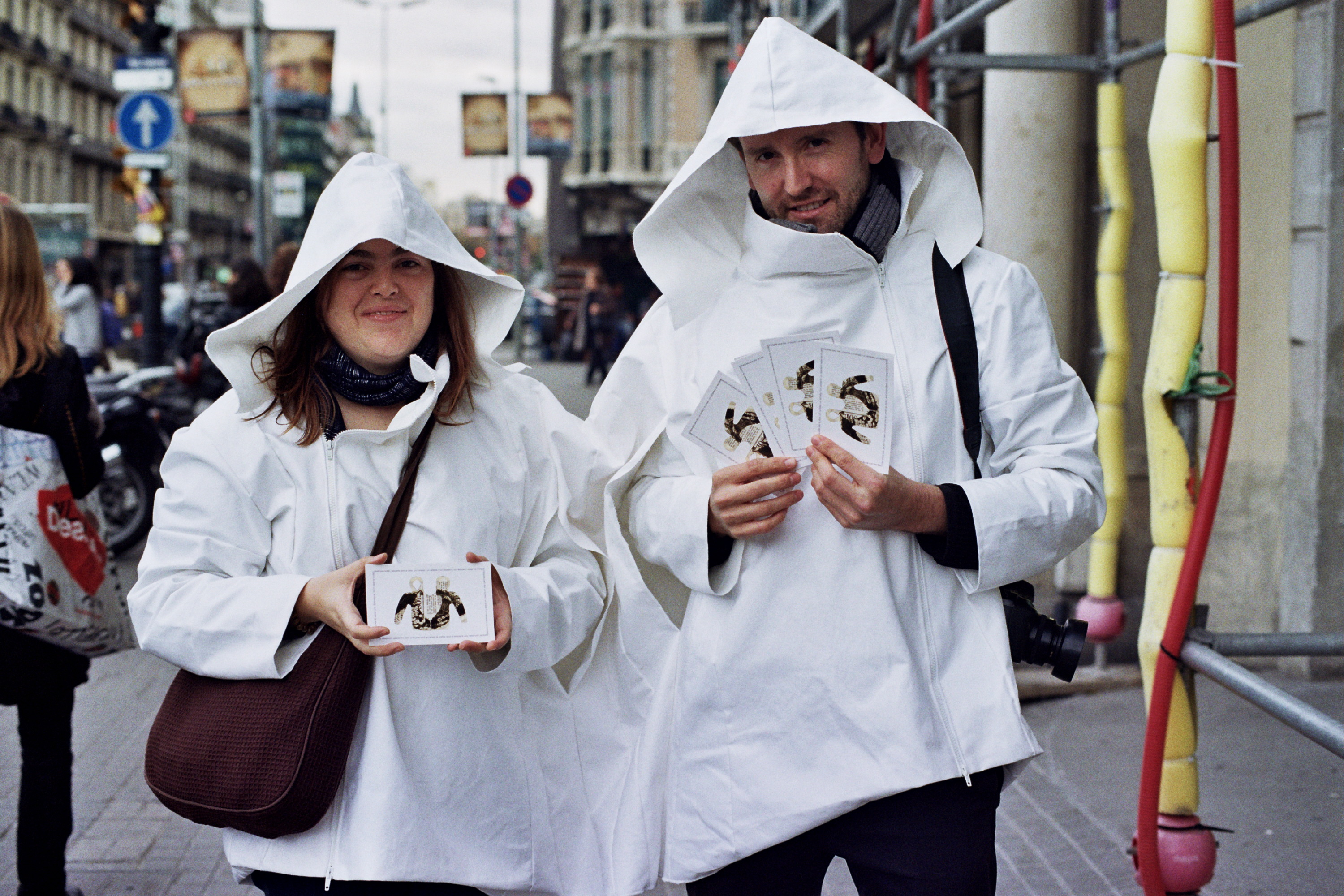
As a symbolic illustration of the walk
and of the city reservoir, Barcelona, we
designed: “jacket for two”. This “jacket
for two” is a way to appropriate the city
while visiting it (these two take space
from the city for themselves). A little
bit of science fiction and a little bit
monastic: to put the jacket on is an entrance
into
another dimension. The jacket is a vehicle
that one wears to change her/his mood. Primarily
though, the jacket is intended to help facilitate
an encounter
between two unknown people in a
city that is mainly known by one. The jacket
serves as protection, not only from the
weather but from judgment; when it is used
for walking, it marks a bubble to walk in;
used to publicize the project, it gives
respect to the task of m postcards in the
street. The white without logos or brand
names contrasts with the highly charged
advertising of city landscapes. “jacket
for two” is an art piece, a form of publicity,
and a manifesto about the
relationship of one person with another
and with the city.
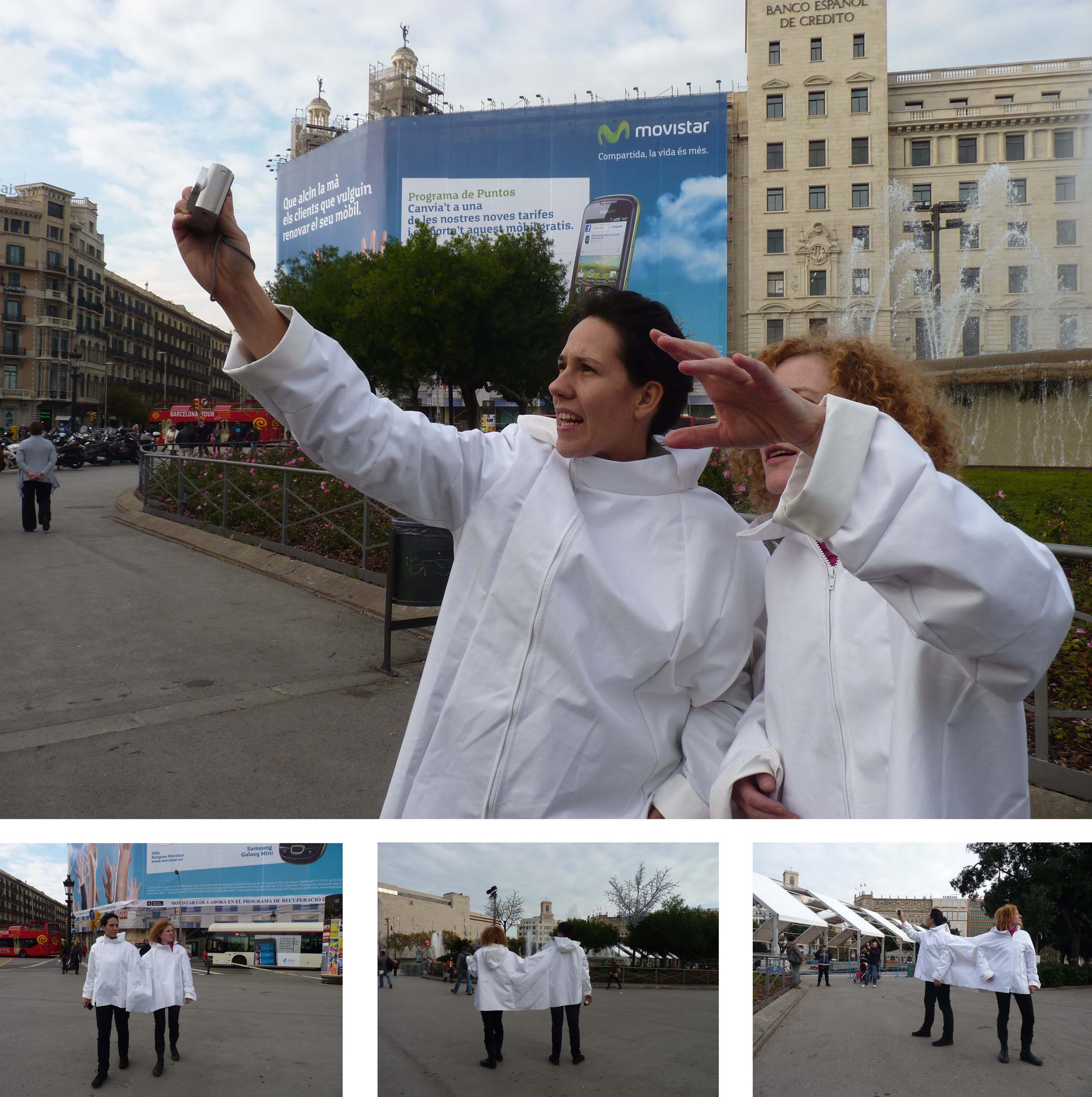
“Jacket for two”
Idea Jana Leo ©
Making Jimena González
Vehicles: INTERPRETATION
POINT
The ‘city reservoir’ will works with
a local cultural institution to house and
publicize the project. The institution will
serve as the point of departure for the
tours and will also provide space for a
small exhibition that introduces the goals
of the project and the available tours.
This is the virtual interpretation center
about the city and enhancing the urban environment
and the information center on the protocols
of City Reservoir.
Vehículos. maps
Mapping is a
tool for reflection and generation. We treat the city as a work in progress. We
start by drawing maps of the possible and potential cities in our city. We made
maps of what is there (maps of the possible cities inside the city) and maps of
what a city could be, (the different visions of a city). We cannot change city
policies, but we can draw the one we envision. We set ourselves in the future,
we act as if the change has already happen: the city is a place of
excellence, where tourist and residents go to recreations and mental recharge.
To imagine a new life is much harder than to wish for it.

We will visit
the maps. Here the projected vision of the city encounters the real, showing
the gaps and potentials. Visiting the maps is another step for the maps makers
and a learning experience of the visitors, who will be educated in the
translation of real and the envisioned. The visits are in the sense “detours”,
because switch trajectories and drawing methods from what is expected.

|

|
Example 1
. The city that a tourist walks versus the city that a resident walks.
“Madrid”. Project: “City Reservoir Madrid” 2009. Following a straight
line through the center of Madrid from Bilbao to Legazpi, a tourist will
continue on without encountering any of the traditional urban and cultural
monuments. “City-Reservoir” is a lagoon within the middle of the city. The
monuments stay on the two sides of the reservoir: on the left-hand side, the
“Palacio Real”;on the right-hand side, the “Paseo del Prado” and the “Retiro.”
This line connects all the popular ‘plazas’ within the area: “Plaza Dos de
Mayo,” the “Plaza de Chueca,” “The Sevilla Plaza,” the “Plaza de Santa Ana,”
“Plaza Lavapies,” and reaches to “Plaza de Lepazpi.” “Madrid Matadero” in
Legazpi –once the ‘meatpacking’ district of Madrid, is now an art center.
|
Vehicles: ARCHIVING THE CITY
Rarely does the
government commission pictures of a city. The goal of the tourist is not to
have an archive but to take a trip. However, most of what happens during this
journey is record keeping. But the archive, the tangible thing that remains, is
the only thing to hold on to and also that which makes the life of a tourist
different from the life of a local. The tourist has an unsaid mission. The private tourist’s archive becomes fresh
testimony of a culture by default via Google. This tour considers the meaning
of photography and the function of the photographer today. The transfer from
analogical to digital has made the figure of the amateur photographer (involved
with techniques) and the documentary photographer (a professional reporter)
disappear.
These tours feed
the ethnographic patrimony (people) and the monumental patrimony with the
photos and video clips generated by the experience uploaded to the internet.
Each tour is complete in and of itself but also part of the archive of the
city. Links through social networking to the archive and physical maps brought
home by participants spontaneously spread the work of the artists and the life
of the cities.
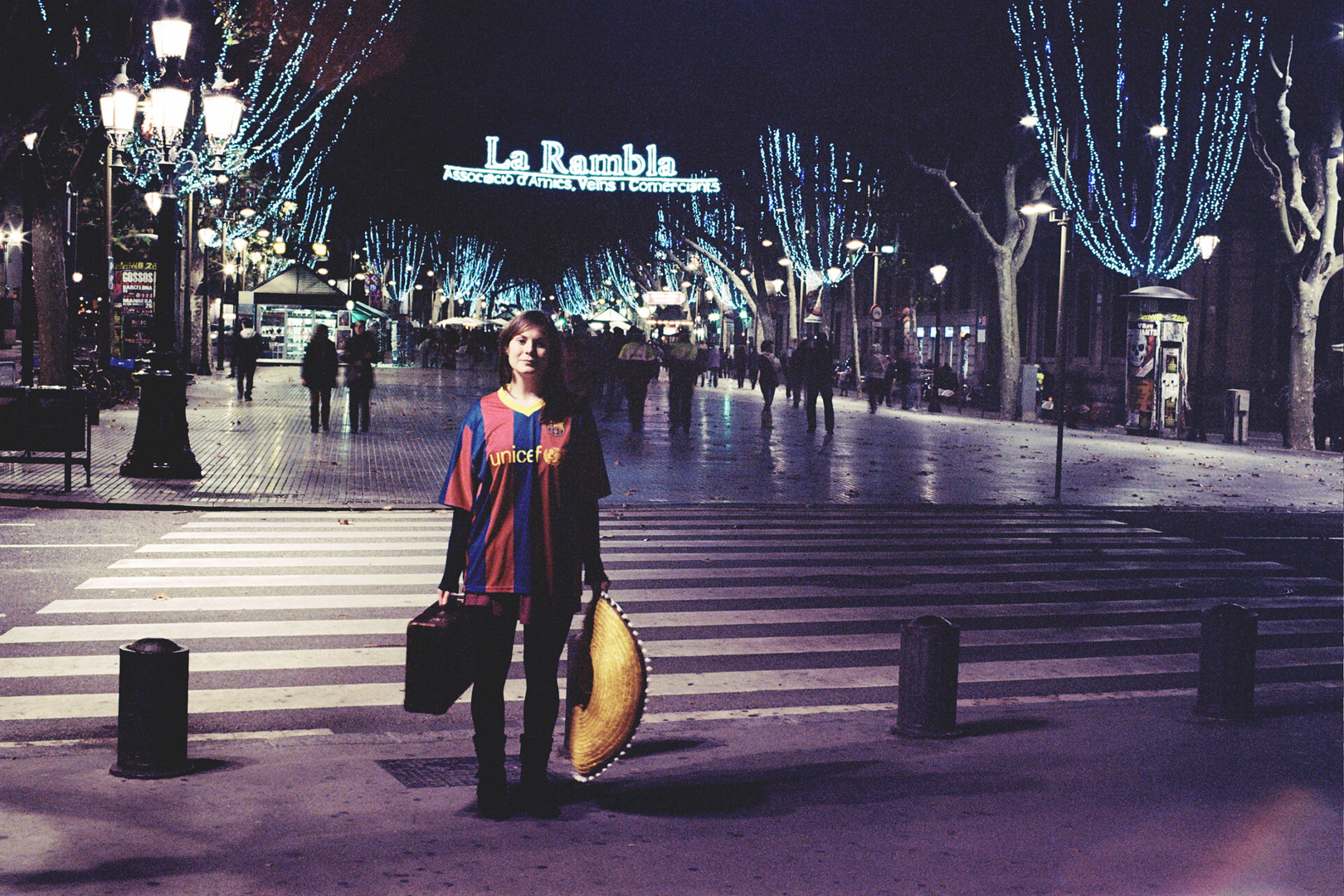
<
|



